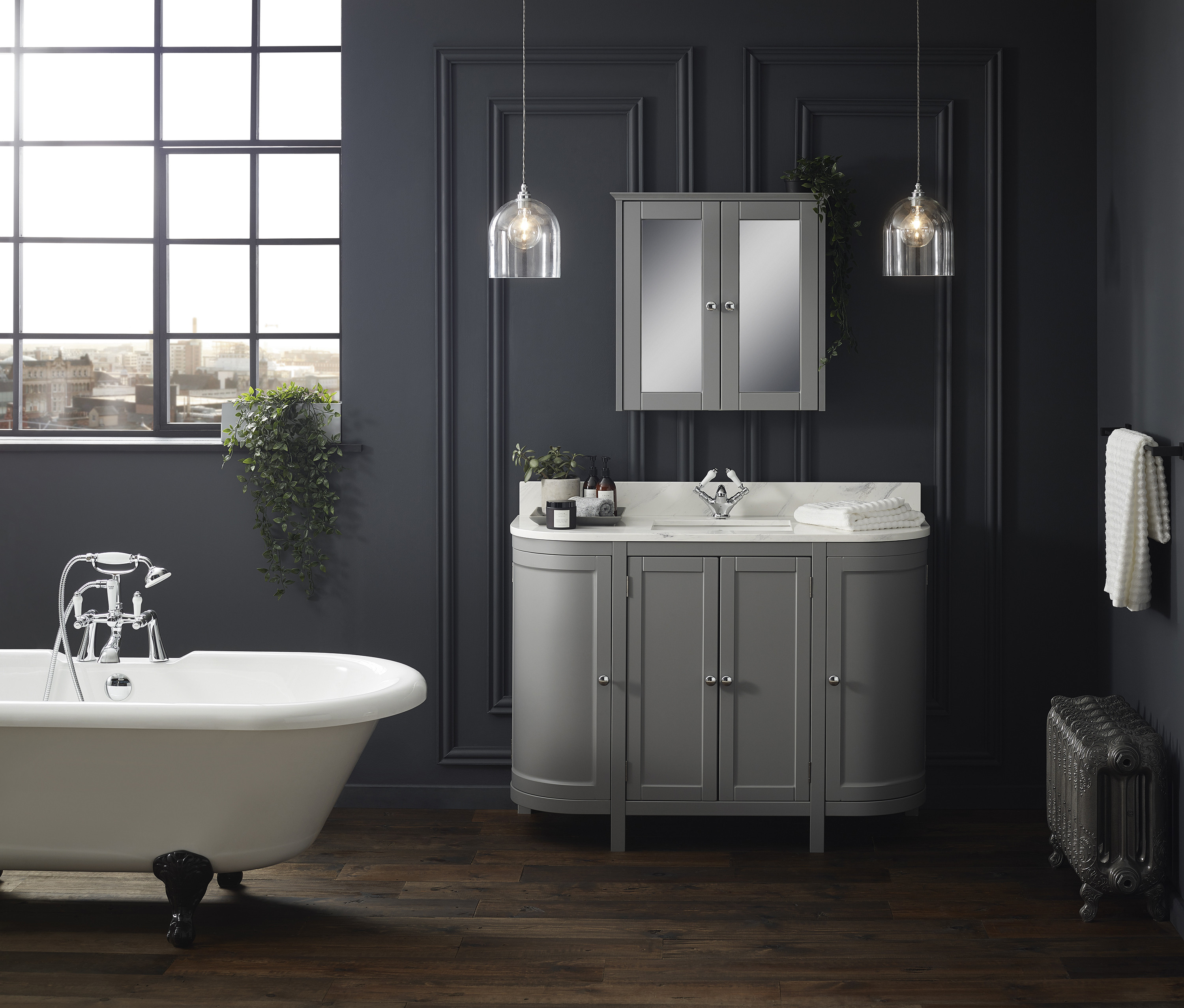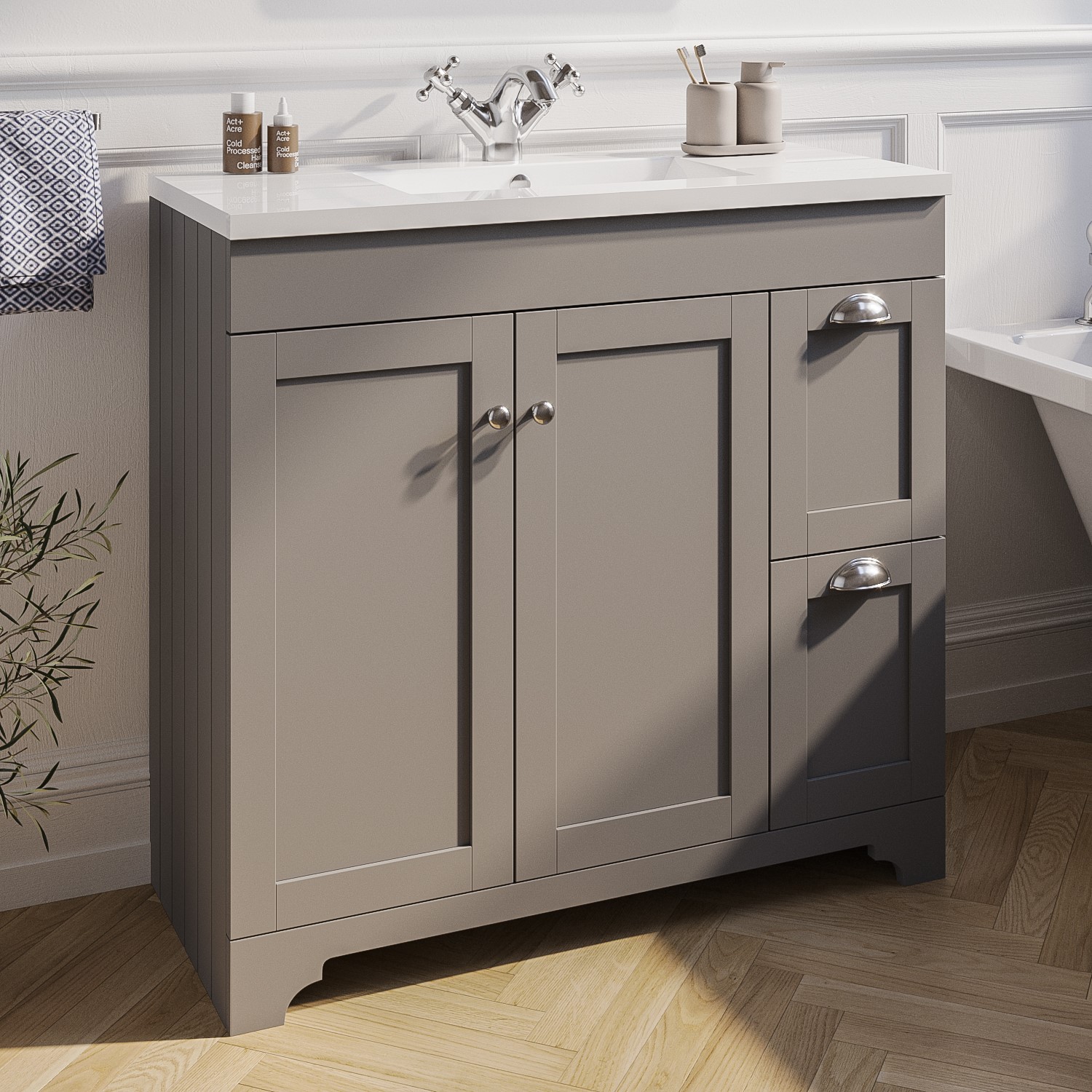The Allure of Old Style Bathroom Vanities

The enduring appeal of old style bathroom vanities lies in their timeless elegance, craftsmanship, and ability to imbue a space with a sense of history and character. These vanities are not mere functional pieces but rather statements of refined taste and appreciation for the artistry of the past. They offer a unique blend of practicality and aesthetic appeal, making them cherished additions to any bathroom.
The Enduring Appeal of Craftsmanship and Materials
The craftsmanship of old style bathroom vanities is a testament to the skill and dedication of bygone artisans. These vanities were often meticulously crafted from high-quality materials, such as solid wood, marble, and porcelain, ensuring their durability and longevity. The intricate details, such as hand-carved moldings, hand-painted finishes, and intricate hardware, reflect the meticulous attention to detail that characterized the craftsmanship of the past. The use of these materials and techniques contributes to the timeless elegance and enduring appeal of these vanities.
The Importance of Design Aesthetics
Old style bathroom vanities often feature design elements that evoke a sense of nostalgia and sophistication. They may incorporate traditional architectural styles, such as Victorian, Edwardian, or Art Deco, with their characteristic ornate carvings, elegant lines, and distinctive hardware. These vanities often have a sense of grandeur and timeless beauty that complements a variety of bathroom styles, from classic to contemporary. The design aesthetics of these vanities create a sense of history and character, adding a touch of elegance and sophistication to the bathroom.
Examples of Design Elements
- Ornate Carvings: Old style bathroom vanities often feature intricate carvings, such as floral motifs, geometric patterns, or classical designs. These carvings add a touch of elegance and artistry to the vanity, showcasing the craftsmanship of the past.
- Antique Finishes: The finishes on old style bathroom vanities often reflect the patina of age, with distressed paint, aged brass, or polished marble. These finishes add a sense of history and character, creating a unique and timeless look.
- Traditional Hardware: The hardware on old style bathroom vanities is often crafted from brass, bronze, or pewter, with intricate designs and polished finishes. This hardware adds a touch of elegance and sophistication, complementing the overall design of the vanity.
Types of Old Style Bathroom Vanities: Old Style Bathroom Vanity Units

The world of old-style bathroom vanities is a tapestry woven with the threads of time, each era leaving its unique mark on design. These vanities are not merely functional fixtures but portals to bygone eras, each reflecting the spirit of its time. Let us embark on a journey through history, exploring the captivating diversity of old-style bathroom vanities.
Victorian Era Vanities
Victorian bathroom vanities, a reflection of the era’s opulent tastes, are characterized by elaborate details and intricate carvings. These vanities, often made of dark, rich woods like mahogany or walnut, are adorned with ornate hardware, intricate moldings, and graceful curves.
The Victorian era was a time of great social and economic change, and these changes were reflected in the design of bathroom vanities.
They often featured elaborate marble tops, showcasing the era’s fascination with natural materials.
A Victorian vanity could be a statement piece, showcasing the homeowner’s wealth and status.
Edwardian Era Vanities
Edwardian bathroom vanities, while still drawing inspiration from the Victorian era, embraced a more streamlined aesthetic. They often featured simpler carvings, lighter woods like oak, and a more understated elegance.
The Edwardian era, a time of transition, saw a shift towards a more functional and less ornate style.
Edwardian vanities frequently incorporated built-in storage compartments, reflecting the growing emphasis on practicality.
These vanities were designed to be both beautiful and functional.
Art Deco Vanities
Art Deco bathroom vanities, a testament to the era’s love for geometric shapes and bold lines, are characterized by sleek, modern designs. These vanities, often made of exotic woods like rosewood or ebony, feature geometric patterns, metallic accents, and a distinct sense of glamour.
The Art Deco movement celebrated modernity and technological advancements.
They often incorporated mirrors with geometric frames and chrome or nickel hardware, showcasing the era’s fascination with industrial materials.
Art Deco vanities were designed to be both stylish and functional.
Mid-Century Modern Vanities, Old style bathroom vanity units
Mid-Century Modern bathroom vanities, a reflection of the era’s focus on functionality and simplicity, are characterized by clean lines, minimalist designs, and a focus on natural materials. These vanities, often made of teak or walnut, feature simple, geometric shapes and integrated storage solutions.
The Mid-Century Modern movement emphasized functionality and simplicity.
They often incorporate floating shelves and minimalist hardware, showcasing the era’s appreciation for clean lines and natural materials.
Mid-Century Modern vanities were designed to be both functional and stylish.
Integrating Old Style Vanities into Modern Bathrooms

The beauty of old style vanities lies in their timeless appeal, offering a touch of history and elegance to any bathroom. Integrating them into modern bathrooms requires a thoughtful approach, aiming to create a harmonious blend of classic and contemporary elements. This process involves finding the right balance between the old and the new, ensuring the vanity complements the overall bathroom design while maintaining its unique character.
Choosing the Right Size and Scale
The size and scale of the vanity are crucial for seamless integration. A vanity that is too large can overwhelm the space, while one that is too small may look lost. It is essential to consider the dimensions of the bathroom and the available space for the vanity. For instance, in a small bathroom, a compact pedestal vanity can be a good choice, while a larger double vanity might be ideal for a spacious bathroom.
The rule of thumb is to choose a vanity that is proportional to the bathroom size, ensuring it doesn’t dominate the space but rather enhances it.
Complementing with Modern Fixtures, Lighting, and Accessories
The key to successfully integrating an old style vanity into a modern bathroom lies in carefully selecting complementary fixtures, lighting, and accessories. Modern faucets, lighting, and mirrors can create a balanced aesthetic while respecting the classic charm of the vanity.
- Faucets: Sleek, minimalist faucets with clean lines and geometric shapes can complement the traditional details of an old style vanity. Consider chrome, brushed nickel, or matte black finishes for a modern touch.
- Lighting: Modern pendant lights or sconces with geometric designs can provide a contemporary contrast to the vanity’s classic features.
- Mirrors: Large, rectangular mirrors with minimalist frames or no frames at all can create a modern and spacious feel, complementing the traditional vanity.
- Accessories: Modern storage solutions, such as sleek countertop organizers or minimalist soap dispensers, can add a touch of contemporary style while maintaining the vanity’s classic appeal.
